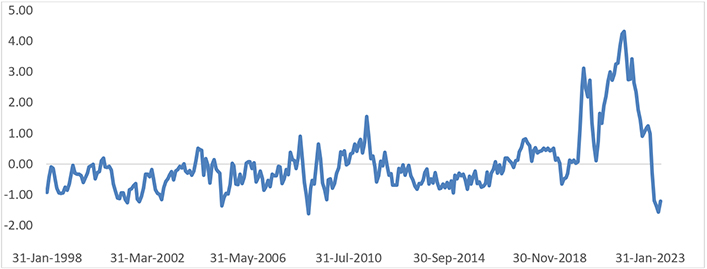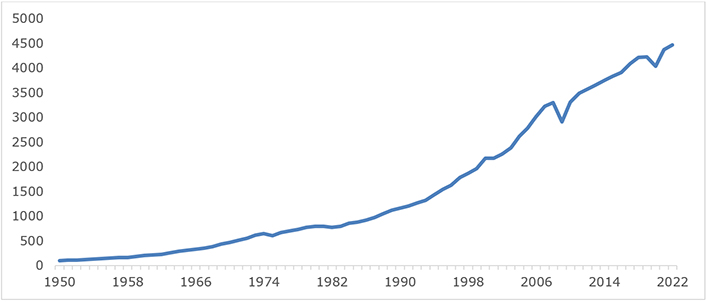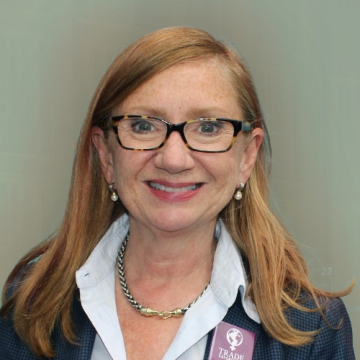Two years at the WTO: My take on the future of the multilateral trading system
Some 807 days since joining the WTO and 20 blogs later, I am preparing to leave Geneva. As I bid farewell and thank the Director-General, colleagues and the broader trade community for having had the opportunity to serve the WTO, I want to share my thoughts on the multilateral trading system — where it stands, where it is going, and what is needed to get there. Spoiler alert: while there is no magic wand to deliver quick success across the board, my insights into the organization's workings lead me to conclude that the WTO is already adapting to meet the challenges and leverage the opportunities of the 21st century.
More can and should be done to fulfil the “WTO rising imperative” — that is, ensuring trade remains anchored in mutually agreed rules while fostering sustainable, inclusive and equitable growth. The road ahead will continue to be bumpy, but the future lies in gradual evolution, not revolution The tools to support this transformation are already emerging and they are being put to good use, bit by bit.
Progress amid global headwinds
To start with, it is not easy being an international organization in the world today, much less one focused on international economic cooperation. The notion that economic interdependence fosters peace and prosperity, which has been a cornerstone of the post-war economic architecture, is under question. The global financial crisis of 2007-08, the COVID-19 pandemic and the war in Ukraine have all created a sense that trade openness can lead to vulnerabilities arising from trade specialization and hence that countries are better off rolling back global supply chains and producing what they need at or close to home.
As has sometimes been the case during my time in Geneva, certain trade perspectives are detached from the evidence. For one, the data shows that, after initial hiccups, foreign supplies were instrumental in delivering critical medical goods during the health crisis and helped countries most exposed to the war in Ukraine to find alternative sources or switch to other products. Moreover, in a major turnaround unthinkable just a couple of years ago, transportation costs and manufacturing activity indicators have largely returned to normal, suggesting that the main driver of supply chain pressures was a pandemic-induced surge in demand for durable consumer goods rather than any deep, structural flaws in global production networks (see Figure 1).
Figure 1. Global Supply Chain Pressure Index

Source: Federal Reserve Bank of New York
Although supply chain pandemic disruptions have been resolved, heightened geopolitical tensions continue to undermine trade cooperation. Worries about trade vulnerabilities stemming from disruptions such as epidemics or natural disasters have given way to accusations of trade interdependencies being weaponized by foreign governments. Subsidies and other trade-distorting industrial policy instruments, sometimes put in place in the name of national security, have made a comeback, bringing with them greater policy uncertainty, potential disregard for global trade rules, and shrinking trade and investment opportunities, especially for the poorest countries that remain at the margins of the global economy. Amid this big player politics, many developing and least-developed countries prefer not to take sides and continue to look for ways to leverage the trading system to integrate further into global markets.
More eager to join, no exits
For all the challenges facing the world, the WTO has so far succeeded in underpinning rising trade flows (see Figure 2), which in turn have been a key driver of poverty reduction across the globe. This has been possible because the WTO has changed and is changing, even if progress often comes about rather slowly. Established in 1995 to succeed the General Agreement on Tariffs and Trade (GATT), the system is not the same today as it was back then. It has expanded to welcome new members — currently 164 of them, with 20 plus in line to join and no one departing — and adapted to new technologies that have transformed the what, the who and the how of trade. Emerging tools and practices could pave the way for the organization to further support governments as they undertake the transition to a green and digital future, address food security challenges and ensure more people benefit from trade.
Figure 2. Evolution of world trade, 1950-2022
Volume index, 1950=100

Source: World Trade Organization
Standing still is not an option
Preserving and building on a global trading system that has served the world well over almost eight decades is and should be the guiding principle. There are hopeful signs for the future. WTO members have embraced a pragmatic “reform-by-doing” approach to improve the day-to-day work of the organization. Discussions to make the WTO's deliberative function more effective and efficient are underway, with dedicated conversations planned on issues such as industrial policies and serious reflection on how to deepen and improve existing dialogue on trade and the environment and on the needs of developing countries. Even major players, who from time to time are bilaterally at odds with each other, can sit down together in informal settings to try to better understand current challenges and explore potential solutions. In addition, the WTO Secretariat has been gearing up its research work, in collaboration with the World Bank, the International Monetary Fund and others, to support work on achieving positive trade outcomes, providing data, evidence and analysis.
In a rule-making institution, finding ways to make progress in trade negotiations is paramount. This means looking not only at multilateral solutions but adopting flexible formats to weave together various interests, needs and priorities in different combinations. One such approach is the negotiation of plurilateral agreements that, while open to all members, can allow for trade cooperation among the willing. The WTO moved in this direction with the adoption by 65 members of an agreement to reduce red tape in services trade. More recently, over 110 members concluded in substance an agreement to facilitate investment. I trust a solution will be found to bring these and future agreements, not least one on digital trade, into the WTO framework. Normalizing plurilateral deals, increasing trade capacity building to help developing countries implement new commitments, and adopting novel approaches, such as the “opt-out technique” developed in the context of the response to the pandemic are increasingly adding new elements to the WTO toolbox.
Making the most of MC13
The next gathering of trade ministers — at the WTO's 13th Ministerial Conference (MC13), to take place in Abu Dhabi in February 2024 — provides an opportunity for members to take a few additional steps towards an improved WTO. In addition to some deliverables on the negotiating front — including on plurilaterals — one important outcome could be the establishment of a process, with clear steps and mechanisms, to advance dialogue in sensitive areas. It would also mean addressing the effectiveness of the WTO's dispute settlement system, a key issue for most WTO members as well as for the business community. In informal talks, members have been discussing critical topics, with the aim of having a fully functioning mechanism by 2024. Progress has recently been reported. In the meantime, governments continue to rely on WTO panels to sort out disputes, while resolving conflicts through mutually agreed solutions and resorting to WTO regular committees to raise trade concerns and ease tensions.
A call for creative multilateralism
For all the good work that is happening, mostly under the radar, there is no denying that governments face some tough choices in the months and years to come to deal with pressing matters that, if left unchecked, could seriously erode the multilateral trading system and damage trade as an engine of growth and prosperity. In addition to dispute settlement, managing the negative spillover effects of rising subsidies and the increased use of the national security exception to explain trade actions are also critical. Dealing with diverging approaches to trade measures aimed at combating climate change is also key. Managing the adoption of increased responsibilities by larger emerging markets in the multilateral trading system is required, as are greater efforts to better integrate those currently marginalized from the benefits of trade. In this context, members would be well served by a WTO Secretariat that provides enhanced monitoring and transparency.
I have argued before that even though the WTO has strong foundations, the multilateral trading system needs to be updated in order to unleash new sources of trade growth, to harness the potential of trade to resolve challenges of the global commons and to manage trade tensions. The WTO of the future will not look like the WTO of today, but 25 years from now we will still recognize the basic principles of building trust through transparency, non-discrimination, fairness and reducing trade costs. Pragmatism will remain the cornerstone of success. For sure, greater creativity will be required to adjust established practices to the societal and global needs of the 21st century. My time at the WTO leads me to think that there will be no “big bang”. But I also trust governments can bring about change, and have begun to do so, even if only gradually. I wish them and the institution well.
* Anabel González was Deputy Director-General from June 2021 to August 2023
